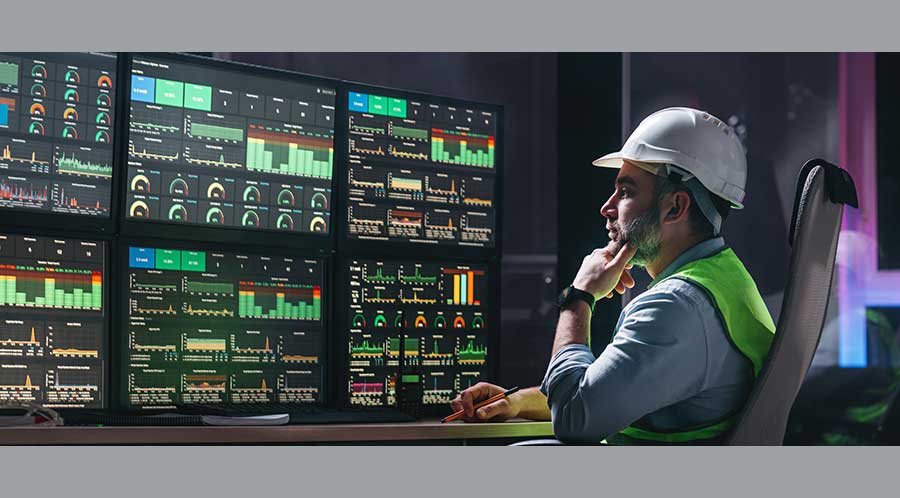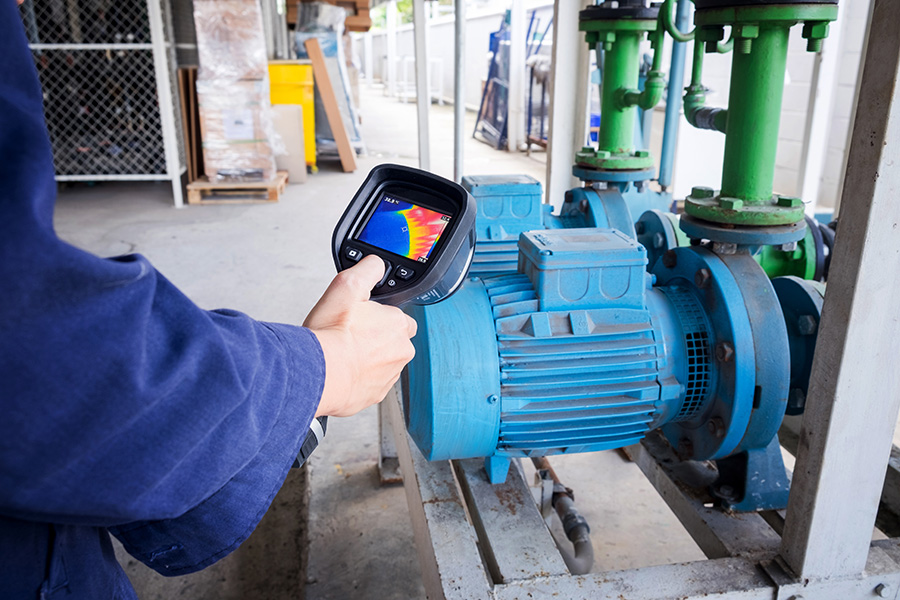Leveraging Technology to Optimize Facilities Management
By exploring several key technological developments, maintenance and engineering managers can gain greater insights into their role in optimizing facilities management services.
By Darrell X. Rounds, Contributing Writer
Facility management is a crucial component of any organization's operations, encompassing a range of services aimed at ensuring the functionality, comfort, safety and efficiency of the built environment. Traditionally, facility management has been a labor-intensive and complex task that requires meticulous planning, coordination and execution.
But with the advent of technology, facility management is undergoing a profound transformation that enables managers to streamline operations, enhance service delivery and optimize resource utilization. By exploring several key technological developments, maintenance and engineering managers can gain greater insights into their role in optimizing facilities management services and their impact on institutional and commercial facilities.
Technology rolls on
Facility management has evolved significantly in recent years from a manual and reactive approach to a more proactive and technology-driven model. Facility managers traditionally have relied heavily on paper-based systems, spreadsheets and manual processes to manage facilities. The results included inefficiencies, delays and inaccuracies.
In recent years, technology has become a cornerstone of operational efficiency in various facilities departments. The integration of advanced technological solutions into facilities maintenance services has significantly enhanced the effectiveness, reliability and sustainability of operations. With the emergence of advanced technologies, facility management has undergone a change in basic assumptions, enabling managers to automate routine tasks, monitor facilities in real-time and make data-driven decisions.
Today, managers, operators, and engineers have a multitude of technological solutions at their disposal, including the Internet of Things (IoT), artificial intelligence (AI) and machine learning, data management and cloud-based solutions.
Eye on IoT
When the Internet became visible to the public in the early 1990s, I do not think we really understood its potential not only for humans to communicate with each other but for the way it could allow systems and machines to be connected and communicate with each other. IoT is one of the key technologies driving the transformation of facility management.
IoT refers to the network of interconnected devices embedded with sensors, software and other technologies that enable them to collect and exchange data. IoT plays a pivotal role in facilities management by creating smart buildings and facilities and enabling real-time monitoring and control of various systems, such as HVAC, lighting, security and occupancy. For instance, IoT sensors can be deployed throughout a facility to monitor energy use, detect equipment failures and track occupancy patterns.
This data can then be analyzed to identify inefficiencies, optimize resource allocation and predict maintenance needs. By leveraging IoT, managers can proactively address issues, reduce downtime, and enhance the overall operational efficiency of the facility.
As technology has improved through the years, the cost to implement this technology has decreased. One key application of IoT technology is the implementation of building automation systems (BAS), which leverage IoT technology to connect the sensors associated with HVAC, lighting, security, access control and other interrelated systems, providing a centralized control system that monitors and controls building functions.
The average cost to enable IoT in a building can vary based on several factors, including the specific technologies chosen, the scale of implementation and whether the building is new construction or being retrofitted. The cost of deploying a BAS, which often includes IoT components, generally falls between $2.50 and $7 per square foot.
For IoT sensors and controls specifically, the cost can work out to as little as $0.75 per square foot, depending on the type of system. These figures are estimates and can fluctuate based on the complexity and requirements of the project. It is also important to consider that while the initial investment might be significant, the long-term savings in energy and maintenance costs can be substantial.
AI To Support FM
AI also is revolutionizing facility management, particularly in predictive maintenance. AI refers to the theory and development of computer systems capable of performing tasks that historically required human intelligence. These tasks include recognizing speech, making decisions, identifying patterns and understanding and translating spoken and written language.
AI algorithms can analyze vast amounts of data collected from sensors and other sources to identify patterns and anomalies that might indicate potential equipment failures. By predicting maintenance needs in advance, organizations can avoid costly downtime, extend the lifespans of their assets and optimize maintenance schedules.
For example, AI-powered predictive maintenance systems can analyze data from HVAC systems to identify signs of wear and tear, enabling managers to schedule maintenance before a breakdown occurs. AI also can be used to optimize energy use by analyzing historical data and weather forecasts to adjust heating and cooling settings accordingly.
Implementing AI technology in facilities management involves various costs, and these can vary widely, depending on the specific technologies used, the size and complexity of the facilities and other factors. While the costs for implementing AI within facilities management can vary, managers should get a detailed quote from a service provider.
Data deep dive
Bad data leads to bad business decisions. Good data leads to good business decisions. Great data and great data management lead to great business decisions. The technology of data management is critical to effective facility management in several ways:
- Efficiency and productivity. Technology streamlines facilities management by automating processes and reducing manual efforts. Integrated platforms, computerized maintenance management systems and smart building technologies facilitate efficient communication, task allocation and real-time data analysis.
- Data-driven decision making. With the abundance of data generated by connected devices and sensors, facilities managers can make informed, data-driven decisions. Real-time insights into building performance, energy use and occupancy levels allow for proactive planning and optimized resource allocation.
- Predictive maintenance. Thanks to predictive analytics, facilities can plan in the long term, replace dysfunctional equipment without creating bottlenecks and downtime at the facility and eliminate human error from the decision-making process.
- Asset management. Collecting data on the condition of assets across an organization is the first, most basic and fundamental building block of any data strategy. This data can be used to establish facility condition indexes, which enhance current condition data to provide a more strategic outlook.
- Energy efficiency. Data enables facilities management teams to monitor and manage energy use, leading to more energy-efficient solutions.
Data management technology has revolutionized facilities management, transforming it from a basic industry function to a strategic and technology-oriented discipline. It has empowered managers to redefine their strategies, enhance occupant experiences, and future-proof their facilities.
Cloud considerations
Cloud-based solutions also provide numerous benefits within facilities management:
- Accessibility. Cloud-based facilities management software provides a centralized database that managers can access from any location, via any device through a web browser and at any time. This accessibility serves the needs of an increasingly dynamic and mobile workforce.
- Comprehensive management. These solutions enable organizations to manage and monitor various aspects of facilities’ operations, including asset management, preventive maintenance, energy monitoring, space allocation and security management.
- Scalability. Cloud-based solutions are scalable to meet the needs of companies of many sizes. They can grow with the organization, accommodating an increasing number of users and more complex processes without the need for significant infrastructure investment.
- Cost-effective. Cloud-based solutions often operate on a subscription model, eliminating the need for substantial upfront investment in hardware and software.
- Real-time updates. These solutions provide real-time updates, allowing for immediate response to issues and efficient management of resources.
- Integration. Cloud-based facilities management software can integrate with other systems, providing a comprehensive view of the facility’s operations.
While technology offers immense potential to revolutionize facilities management, organizations must overcome certain challenges to ensure successful implementation. One of the key challenges is the integration of disparate systems and technologies, which requires careful planning and coordination. Organizations must also address concerns related to data privacy and security, particularly when collecting and analyzing sensitive information.
Organizations also need to ensure that their staff are adequately trained to leverage technology effectively and that they have access to the necessary tools and resources. By addressing these challenges, organizations can harness the full potential of technology to optimize facilities management services and drive operational excellence.
Technology is revolutionizing facilities management, enabling organizations to streamline operations, enhance service delivery, and optimize resource utilization. By leveraging technologies such as IoT, AI and cloud computing, managers and their organizations can create smart, efficient and sustainable facilities that meet the evolving needs of the workforce. But to ensure success, organizations must overcome challenges related to integration, data security and staff training. By embracing technology, organizations can unlock new opportunities for innovation and growth in facilities management.
Darrell X. Rounds is director of facilities services and project management for Stellantis N.V. He leads facilities operations at its 5.8 million square foot Chrysler Technology Center. Darrell has over 27 years of industry experience, having led teams for facilities management, construction and engineering with portfolios totaling more than 53 million square feet and $7.2 billion in asset replacement costs.
Related Topics:












